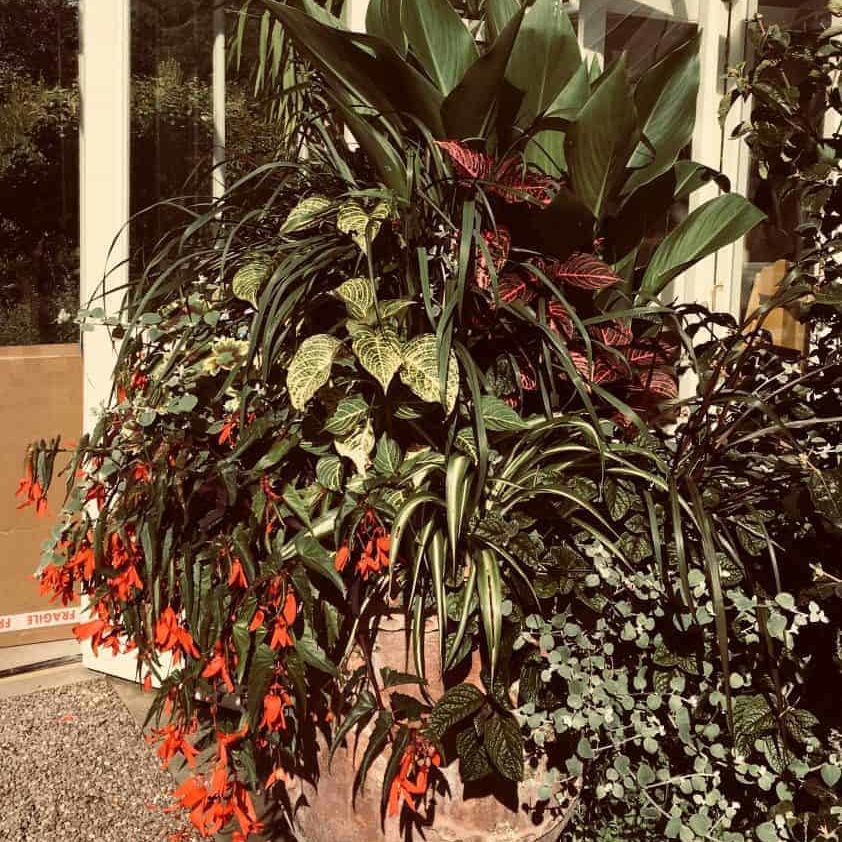Do you look at plant books and labels and wonder who on earth comes up with such complex and crazy plant names? And how they even invent these things? Well actually, had you been an Ancient Roman or Greek, these names would have been extremely familiar. Why? They’re composed mainly of descriptive words derived from these classical languages. Having said that, a Roman or Athenian wouldn’t necessarily have been able to visualise the exact plant being described. They’d have had “common names” for plants, just like we have buttercup, dandelion or daisy.
In order to help you out when picking or planting specimens in future, below is a list of elements commonly found in the names of plants we use at Bestall & Co.
A-Z
Acuti- “Sharp”, from Latin acutus
Angusti- “Narrow”, from Latin angustus
Arborescens “Tree-like”, from Latin arbor “tree”
Argenteus, argenteum, argentea “Silvery”, from Latin argentum “silver”
Arvensis, arvense “Of the fields”, from Latin arvus “cultivated”
Atro- “Dark, black”, from the Latin ater
Aureus, aureum, aurea “Golden”, from Latin aurum “gold”
Baccatus, baccatum, baccata “Bearing berries”, from Latin bacca “berry”
Caeruleus, caeruleum, caerulea “Sky blue”, from Latin caelum “sky”
Capensis, capense “South African”, from New Latin
Chinensis, chinense “Chinese”, from New Latin; the older Latin term is sinensis, sinense which you’ll also see
Denticulatus, denticulatum, denticulata “Toothed”, from Latin dens “tooth”
-flora “Flowers”, from Latin flos
-folia “Leaves”, from Latin folium
Giganteus, giganteum, gigantea “Very large”, from Greek γιγας “giant”
Grandi- “Large”, from Latin grandis
Hepta- “Seven”, from Greek ἐπτα
Japonicus, japonicum, japonica “Japanese”, from New Latin
Lusitanicus, lusitanicum, lusitanica “Portuguese”, from Latin Lusitania “Portugal”
Macro- “Large”, from Greek μακρος
Maculatus, maculatum, maculata “Spotty, marked”, from the Latin for “stained”
-mas “Male”, from Latin
Micro- “Small”, from Greek μικρος
Mollis, molle “Soft”, from Latin
Nemorosus, nemorosum, nemorosa “Of the woods”, from Latin nemus “sacred grove, woodland”
Nigra “Black”, from Latin niger
Nivalis, nivale “Snowy”, from the Latin nix “snow”; you’ll also see niveus, niveum, nivea
Occidentalis, occidentale “Western”, from the Latin occidere “to fall down”
Officinalis, officinale “Medicinal”, from Latin officina “workshop, practice”
-oides “Resembling”, from Greek ειδος “shape, form”
Orientalis, orientale “Eastern”, from the Latin orior “to rise”
Paniculatus, paniculatum, paniculata “Tufted”, from Latin panicula “tuft”
Parvi- “Small”, from Latin parvus
-phylla “Leaves”, from Greek φυλλον phyllon
Plani- “Flat”, from Latin planus
Purpureus, purpureum, purpurea “Purple”, from Latin
Racemosus, racemosum, racemosa “Forming clusters”, from Latin racemus “cluster”
Repens “Creeping”, from Latin; related to the English word reptile
Semper “Always, ever”
Spicatus, spicatum, spicata “Spiky”, from Latin spica “spike”
Tenuissimus, tenuissimum, tenuissima “Softest”, from Latin tenuis “soft”
Vulgaris, vulgare “Common” (not vulgar though!), from Latin
Names which give insight
Other genus names give a deeper insight into the plant. For example:
- Delphinium: Look closely at the flowers; they could be said to be “dolphin-shaped”. The Ancient Greek for dolphin was delphis δελφις !
- Digitalis: We don’t recommend sticking your fingers in poisonous foxglove flowerheads, but they’d fit very nicely. The Latin for “finger” was digitus.
- Geranium: The Ancient Greek for a crane was geranos γερανος, and this plant’s seedpods look like a crane’s bill.
- Allium: We usually use this word for the ornamental plants, but it actually means “garlic” or “onion” in Latin. Our “Purple Sensations” are closely related to garlic, onion and leek.
The list could go on and on, but that’s far too much information for one blog post. If your interest is piqued, there are plenty of publications around which will tell you more.
Kevin Gelder
Kevin joined Bestall & Co in late 2017 and brought a range of skills with him from a varied background. He gained a degree in French and Italian from Lancaster University in 2009 before successfully completing a PGCE at the University of Sheffield in 2011. He built on his communication skills through secondary language teaching, before working in healthcare administration.
Ultimately though it was his passion for plants and gardening which brought him to Bestall & Co as a member of the planting team, and although he's now moved back to an office based role, the articles he wrote whilst he was still with us live on.



